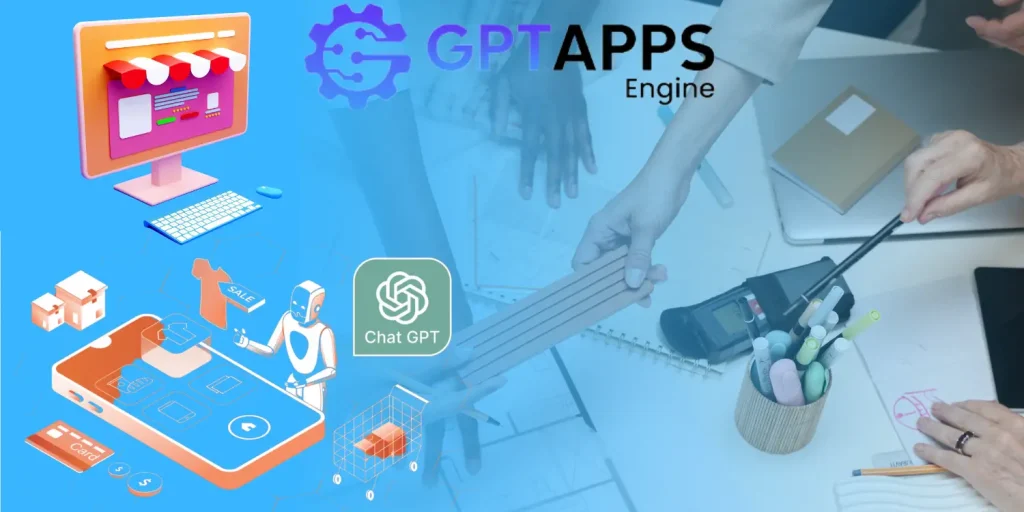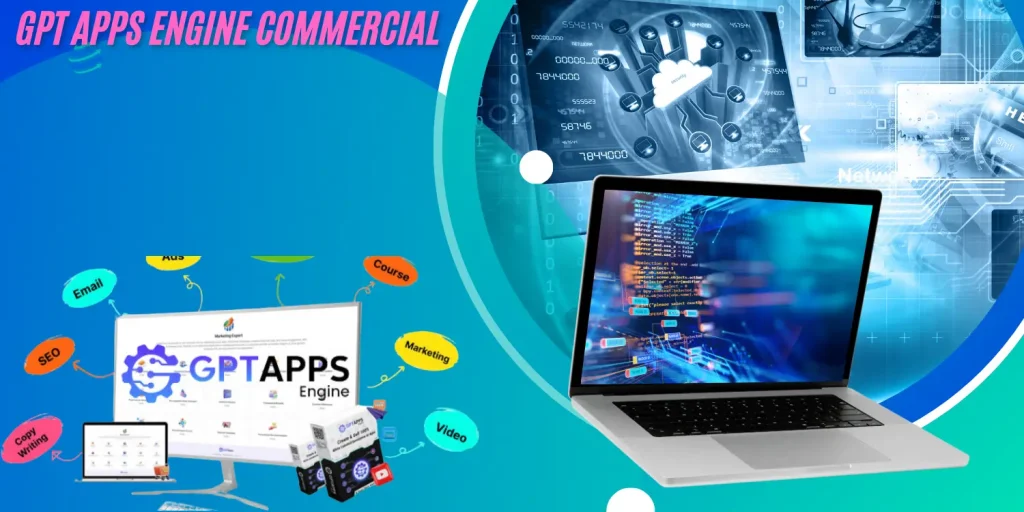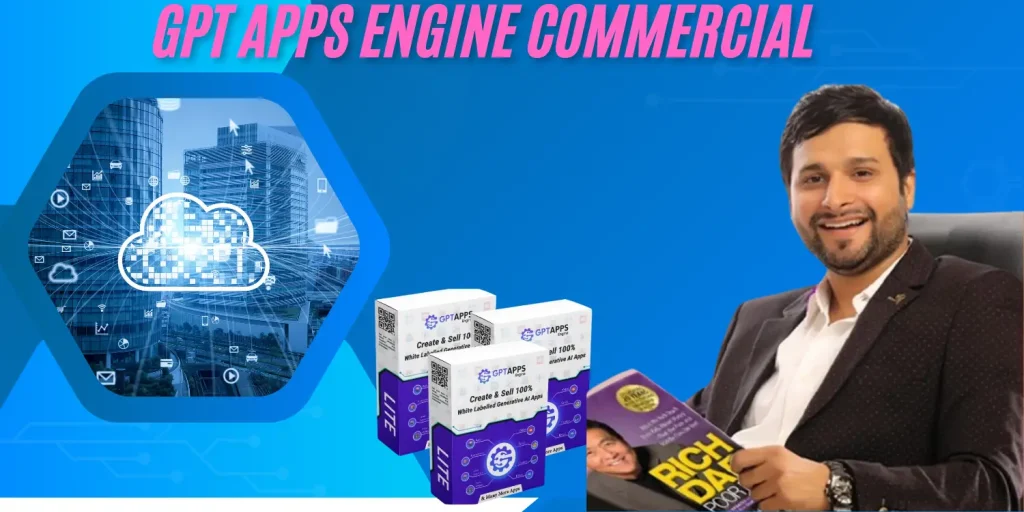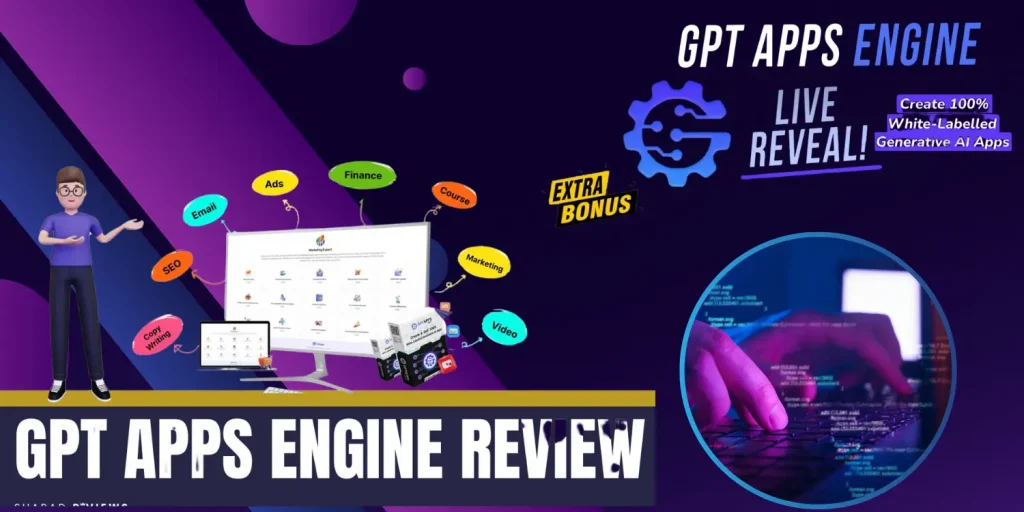Introduction to GPT Apps Engine
Some Examples: In the competitive digital landscape we have today, companies never stop exploring fresh and innovative ways to boost productivity, streamline workflows, and enhance customer engagement. GPT Apps Engine, which is an innovative and groundbreaking platform that allows developers and businesses to simply build smart, scalable apps leveraging the power of Generative Pre-trained Transformers (GPT). This system is based on the latest Natural Language Processing (NLP) models, allowing users to take advantage of conversational AI, text generation, language comprehension, etc. Its simple interface and strong architecture allow both technical and non-tech users to create sophisticated, personalized apps.
making the GPT Apps Engine the only source of flexibility and usefulness. On one hand, it is the time for developers building enterprise-level applications, and on the other hand, business owners with not much technical background. Together with drag-and-drop interfaces, customisable templates, and API interfaces, they promise seamless experiences while lowering the complexity typically associated with AI development. Due to its cloud-based structure, which ensures outstanding performance and reliability, the platform is the ideal choice for businesses looking to stay ahead in a highly competitive industry.
Additionally, the enterprise-class capability of the GPT Apps Engine enables never-before-seen operational savings and commercial-class revenue generation. By automating tedious tasks and delivering personalized services to customers, businesses can drive better customer satisfaction and may also save a lot of money in the process. Its support for multilingual functionality provides enterprises with an opportunity to reach out to their target audience and break into the global market, making it an ideal tool for large enterprises.
Any commercial use has to be safe and compliant, and strong protections of the GPT Apps Engine do just that. Users can run applications confident that both their and their customers data is safe through industry standards compliance, data encryption, and built-in privacy features.
The release of GPT Apps Engine is another crucial milestone on the way to enabling access to these AI-enhanced applications. In addition to democratizing powerful AI capabilities, the platform accelerates innovation, helping companies address real-world problems more effectively. Endless possibilities like enhancing customer experiences, streamlining internal processes, or creating new revenue streams.
As the digital world erupts with innovation, the GPT Apps Engine is a Kindle, a life raft for creativity and usefulness. It enables businesses and developers to rethink what is possible with AI and gives them the ability to build apps that are more intelligent, impactful, and faster.
If you think this introduction can be improved or expanded in any way, let me know.

Is GPT Apps Engine commercial?
GPT Apps Engine is a profit-making company on its own.
GPT Apps Engine, the generative AI-powered tool, can be used for non-commercial and commercial applications depending on how it is used and integrated. At its core, the GPT Apps Engine is an NLP system that enables many kinds of applications, from automation to customer service to education to content creation and beyond. We can look further at its potential commercial aspects.
Versatility of the business applications
Due to its breadth of extensibility, GPT Apps Engine is a strong candidate for use in a commercial environment. The engine can be put to use in various industries for increased production, reduced expenses, and enhanced customer engagement. For example:
- Customer Support: With chatbots that have built-in engines capable of answering common questions and escalating complex issues, organizations can ease the burden on human agents and provide immediate support.
- Content creation: Marketing teams will use GPT-based technologies to generate blog entries, advertising material, and social media content quickly and consistently to save time and maintain brand consistency.
- Personalised Recommendation: The engine is used by e-commerce websites to give personalised product recommendations based on user activity and preferences.
- Automation: Industries, from healthcare to finance, are using GPT applications to automate repetitive tasks, like generating reports or summarizing complex sets of data.
What kind of real-world benefits can the GPT Apps Engine deliver that could become part of actual corporate workflows?
Both are for profit, not reachability for users…
With its economic versatility, the GPT Apps Engine is more than just a business client device. It’s available for use by an individual artist, researchers, and educators for personal, educational, or non-profit purposes. For instance:
- Education: Teachers and learners can talk about complex concepts, help break them down, and practice language with GPT-based tools.
Based on their findings, how can you use the engine• Perform automated research: Scholars and subject-matter specialists use the engine for text analysis, paper draughting, and information summarisation.
- Creative Projects: Writers, artists, or hobbyists use technology to brainstorm, craft, or experiment with creative writing.
Eminent non-profit applications, clearly in service of the universality of the GPT applications engine, can be seen in the clip above. All these apps are great BAC fortifications outside the meeting room.
About how to earn money or acquire licenses
Typically, companies seeking to build the GPT Apps Engine do so via a subscription and licensing approach. OpenAI, which created GPT, offers tiered pricing models that allow businesses to scale back or increase consumption as needed. This monetisation method opens the path for economic initiatives that will provide the technology for developers and smaller businesses to continue developing.
Moral Considerations to Consider
The GPT Apps Engine must be used ethically while doing business. Businesses must not use deceptive tactics; they should protect user data and act transparently about how to use AI. In particular, in the areas that require critical thinking, decision-making, or enable compassion, a delicate balance between automated and human surveillance should be designed.
To sum up
When the GPT Apps Engine is a tool by nature, its “commercial” status depends on how it will be used. In addition to offering organisations many opportunities to enhance the flow of operations and profit, it has proven highly valuable in private, creative, and educational environments too. The potential for commercial and non-commercial use makes generative AI a disruptive technology.

What is the GPT Apps Engine for creating apps?
Developers and businesses could build and manage powerful language models (e.g., the OpenAI GPT-4, which is one of the many models in the GPT (Generative Pre-Trained Transformer) family of models) using the GPT Apps Engine platform. This ML- and NLP-driven engine simplifies the building of dynamic, interactive, and stateless applications that can digest massive amounts of data, automate actions, and interact logically with the user.
App engine 1. Key features of the GPT applications engine Now the core of systems such as the GPT Apps Engine revolves around language processing and language generation, similar to that of humans. This allows ingenuity to create an application that reacts just like human speech, understands context, and interprets natural language input. This intelligence with a friendly UI is what makes this engine useful for chatbots, virtual assistants, and content producers.
Customization and adjustment, which allow the alteration of models for specific use cases, are two of the best features of the GPT Apps Engine. You may reenable the GPT model. It can be fine-tuned for hyper-specialised performance (in terms of specific occupations, industries, or operational domains) and made more user-friendly for key developer communities of applications. For example, they can train it to converse in a specific language (medical language for the healthcare industry) to obtain precise results. Due to the change, it actually matters for the application.
APIs and integrations: Integrate the GPT Apps Engine with different APIs to allow communication between apps, as well as other services and programs. This allows you to build very complex systems, such as applications that fetch data from the APIs of multiple sources, process that data through GPT models, and then use the output results to either notify the user of something or perform an action.
Current Interactive Communication: Develop programs that immediately respond to human input. This is a requirement for every system that needs to analyze user input in real time, such as customer support software and personal assistants. Such in-the-moment interactions seem fluid and seamless because of an ability to understand context, remember past interactions, and respond appropriately to an ongoing dialogue.
Multilingual—Being able to build applications that can converse with users in every corner of the globe, the GPT Apps Engine is the ultimate way for developers to build applications. It can produce and understand material in different lingo, which makes it increasingly more appealing for organisations that serve an overall customer base.
Scalable and Expansible: Due to the scalability of the GPT Apps Engine, developers can develop apps that expand with the organisation. There is no organisation too big or small, as the engine can be scaled upwards or downwards to match customers’ changing demands without losing performance. As such, we can anticipate its use in several industries such as e-commerce, health care, entertainment, and education.
Benefits of using the GPT Apps Engine
Less time implementing apps: The GPT Apps engine empowers developers to build apps faster with access to a variety of pre-trained models and customization options. Rather than spending time and computational power developing language models from scratch, companies can focus on the pieces that make their products special.
With the GPT Apps Engine, as more apps are built using GPT, the user experience will become more personalised and engaging. Moreover, in order to provide intelligent, dynamic behaviors that aim to engage and delight end users, both user intent and context must be considered.
Make it easier to supercharge productivity and automation: The GPT Apps Engine for Businesses, powered by our infrastructure, enables various workflows and processes to be automated. The engine may reduce human workload and increase team productivity by generating reports, answering consumer queries, and recommending products.

How does it work, GPT Apps Engine Commercial?
Like OpenAI apps, GPT Apps Engine’s commercial side is a GPT app, but it takes on a business linguistic twist, producing AI apps. They typically solve a business challenge using the latest in artificial intelligence in a product, service, or process.
How It Operates:
ESSENTIAL TECHNOLOGY—THE GPT APPS DISCOVER BUSINESS The idea of general-purpose technology (GPT)Generally speaking, basic technology typically creates greater value than persistent technology. GPT is a kind of deep learning model that has been trained on tonnes of textual data that allows it to write human-like prose, answer questions, translate, and so on. The new functionality is a powerful option for organizations wanting to automate or enhance their workflows by applying natural language processing (NLP) to understand and create text based on user prompts.
Enterprise personalization: Using the GPT Apps Engine, enterprises can customize GPT models as per their specific needs. This domain-specific training enhances the model’s ability to analyze data and generate content for knowledge support and customer assistance. For example, a store might tweak the GPT to answer customer queries, and a content marketing agency might use it to write blog posts or advertisements.
Application/Cockpit Development: Businesses can add AI to their existing products and services by building apps on the GPT platform. These use cases include customer support chatbots, administrative virtual assistants, and content generation tools. The GPT engines allow companies to integrate AI functionality into their apps without writing complex machine-learning frameworks from the ground up by accessing an API (application programming interface).
Cases of Commercial Use You can practically use the GPT support apps in every sector of industry. AI chatbots can be used in customer service to answer questions, resolve problems, and even assist customers in deciding whether or not to make a purchase. Businesses use the GPT capacity to generate target-specific, customer-centric content. In the banking sector, it can minimise the casualties of financial advising, for the banking organisation can generate reports from the data it holds and examine market patterns. There are a plethora of application cases that GPT can help all sizes of businesses.
Coverage The GPT Applications Engine Commercial can accommodate a company’s size. It can handle increased demand, regardless of the size of the organization. Adopting cloud-based infrastructure allows businesses to ensure that their AI-powered apps run well even in high-traffic periods.
GPT Apps Engine Commercial: Flexible and user-friendly solutions that enable businesses to maximise the full potential of AI to create intelligent apps. This encourages business innovation, improves customer satisfaction, and streamlines process automation.

How to get a GPT Apps Engine Commercial online?
In order to get a GPT Apps Engine commercial online, you need to make middle decisions on your platforms, understand applications up against your needs, and choose the correct materials to build and manage your ad. Below is a comprehensive guide on how to do that:
You cannot do without being aware of what you are up to and where you are headed.
Identifying your goal or objective is critical when seeking a GPT Apps Engine commercial. Are you using AI, GPT-based services, or specialized software? To create an advertisement with charm, you need to know what you want to say.
Pick the Correct Channel
It is possible to air, distribute, and promote commercials across most platforms after they are created. Some of the most popular are:
YouTube is one of the biggest producers of video advertisements. You can also offer short-form and long-form content to keep customers engaged.
- Social media: Facebook, Instagram, TikTok, LinkedIn, and other networking sites provide intricate ad targeting features. Here, short video clips and ads get decent traction.
Google Ads: If your bigger marketing budget is to put your ad in as many places as possible through Google Ads or programmatic ad networks.
Once you decide where you want your commercial to appear, you can choose a tool or service that allows you to upload and share the video content.
Create the advertisement.
You can hire experts to make the commercial or AI tools to assist in production. Here’s how you approach it:
- Content development (script): In the case of the GPT Apps Engine and what makes it special, one must write an engaging and error-free script. Have you nailed down a great script that is both explained casually yet explains your value proposition?
- Tools to Save Time and Money: You can use OpenAI or other AI tools that are useful for writing the screenplay or designing different elements or even making voiceovers. Tools are available to help combine AI with content creation.
- Video Editing Software: Once you have a script, you may use AI video editors like Pictory or Lumen5, or if you want more advanced editing, create ads with the help of software like Adobe Premiere or Final Cut Pro. If video production is not one of your strong suits, these tools can simplify the editing process.
- narration: A slick, smooth narration can inject some life into your ads. Option one is to hire a professional voice actor; option two is to use text-to-speech software (such as Descript’s or Google Cloud Text-to-Speech’s).
8008110054008302022 5198822820019999 㖰型冠状病毒百度卫》《健康㜍务》亿 ——————————— The first option must be internet access.
Ensure that your advertisement is suitable for the platform on which it will be shown. YouTube ads, for example, may require different formats compared to an Instagram ad:
- Aspect ratio: YouTube prefers a 16:9 aspect ratio, but Instagram and TikTok usually require square (1:1) or vertical (9:16) formats.
- Length: Social media snippets are best as short-form videos (15 to 30 seconds), and YouTube adverts can range from 30 seconds to multiple minutes.
It Is Important to Argue within the Audience
To make your commercial effective, you must know your demographic and target audience. Websites with advanced targeting options include Facebook and YouTube. For instance, you will target according to specific audiences, interests, behaviours, and demographics.
Why Because Google Ads (formerly Google AdWords) allows you to target by keyword, anyone searching for content on GPT Apps Engine may see your ad.
- Use Facebook and Instagram, two platforms that allow targeting audiences by industry, job title, or specific interest in artificial intelligence (AI) technologies.
Both distribute and monitor.
After creating and uploading your advertisement, you should disseminate it and monitor the results. Utilise analytics Hey, the websites to track your ads effectiveness and interaction (use the analytics tools offered by Facebook, YouTube, or Google Ads). This data can then be used to optimise future campaigns.
A/B testing Test different versions of your ad to see what resonates with your target audience.
- Adjust it: Use your data to make changes to your content to help your engagement. For example, you could modify the timing, call to action, or ad placement.
Determine the ROI. Finally, track key metrics such as clicks, conversions, and overall reach and assess your commercial’s return on investment (ROI). This could help you gauge if the costs and effort to create and run the advertisement paid off.
In summary, advertising online across the GPT Apps Engine includes understanding your goals, creating an intriguing ad, choosing the right distribution channels, concentrating on the correct audience, and monitoring the results to enhance future campaigns. Using these strategies will help you achieve your online goals and sell your product/service.

What are the features of GPT Apps Engine Commercial?
The recent announcement with OpenAI with their new GPT Applications Engine Commercial indicates that organisations are still very hungry to quickly plug the commercially available version of GPT into a variety of business applications in order to deliver better customer experiences, automated workflow, and scalable operational excellence. Key features and benefits of the commercial GPT Apps Engine
Knowledge of Natural Language (1.1) IN A NUTSHELL Outlining the technological base of natural language understanding The Commercial GTP Apps Engine business division— One of the main advantages of the industrial sectors of the GPT Apps Engine is its advanced and powerful knowledge of natural language.
Text Generation Another astounding aspect is the ability of the GPT to generate human-readable text that is very similar to human writing. This technology can create reports, blog posts, product notifications, and even creative writing accessible to the general public. This saves businesses the bulk of time, as this allows them to create a volume of content without compromising on quality or relevancy.
Specialization and customization
The commercial version of the GPT Apps Engine— This can be customised and configured to adapt to specific enterprise needs.
The capacity to scale
The second is scalability. As technology empowers companies to scale the optimization of additional processes, or touchpoints, across a variety of channels, productivity increases. Since when the organisation increases, it should tailor its model for meeting its organisation needs, like input of information from the back end, real-time customer care, etc. With but a few languages and cultural idiosyncrasies, businesses may interact with their customers the world over.
data security and privacy. In the corporate sector, data security and privacy matter a lot. All data is encrypted to protect customer and corporate data privacy. By implementing their privacy policies, businesses can ensure their AI does not violate user privacy and is compliant with regulations such as CCPA and GDPR.
It does not need reskilling as it works in the existing systems like CRM (Salesforce), marketing automation (HubSpot), helpdesk software (Zendesk), and many others. The businesses may leverage data insights to identify what parts of the AI model enable great performance and if the customers are really using the service and afterward use this data to adjust their strategy. Analytics, for example, can inform decisions around customer service, operational optimizations, and content.
Economic Efficiency
Human tasks can also be automated, leading to dramatic reductions in operating costs. Till October 2023, you can deal only with training data. This includes automating customer support, generating content at scale, and answering frequently asked questions. This allows companies to increase productivity and optimize their resources without increasing headcount.
To sum up
This also supports most of the GPT Apps Engine Commercial features, so it is a very flexible AI model solution for info models that can be used within all of its projects, such as data analysis, content creation, engine interactions, etc.

Do GPT Apps Engine commercials expire?
GPT-based apps and services will all face the challenge of commercial expiration, and this must be a most important consideration for developers and companies whose solutions are powered by some form of artificial intelligence. OpenAI, the company behind the GPT (Generative Pre-trained Transformer) models, offers different levels of access to its API, from free to subscription. While the services themselves don’t “expire” in the traditional sense, there are certain terms and restrictions regarding usage, subscription, and upgrades businesses must consider.
Subscription Models and Payment Plans: OpenAI and its affiliated companies provide various types of subscription models, and unless the user cancels them, these models generally stay in effect for the billing cycle during which the user cancels. That means a commercial access plan could be said to “expire” if the user fails to make further payments or to renew. The only things that determine when such plans expire are the payment schedule and the user’s decision to continue the subscription. The technology itself doesn’t expire, but if payment is not made, the account may be downgraded or deleted.
Chatbot Usage Limits and Similar Excepted Entities: Most GPT apps offer usage limits and API quotas no matter if they are employed for chatbots, content creation, and other usages. If a company exceeds its allocation—or hits the rate limits of the API—it could be prevented from access until the next billing cycle or after a new payment is made.
Once the allocated API usage for a given time period has been reached, the app will no longer work until the developer upgrades or changes their plan. A change in the conditions of a commercial license can indirectly bring about the expiration of current commercial agreements, for instance, if a company fails to comply with a new set of rules that they are subjected to as a result of the change.

GPT Apps Engine Commercial Conclusion?
When the GPT model is integrated, your apps will be able to understand, generate, and converse in human language in a human-like approach.
User422013836129600157 points out that organisational scalar enables your applications to grow as per your organisation’s requirements. But built-in customisation options delivered a really versatile solution that enabled developers to multimodally modify GPT units for their target needs. The GPT Apps Engine provides the strength and dependability to grow just-great, AI-native experiences that scale from small-scale prototypes to mission-critical enterprise solutions.
The intent to offer privacy and security, in addition to technical prowess, at the core of the GPT Apps Engine is one of the principal reasons for its design. It includes features designed to protect user data and ensure compliance with legal and industry standards. It ensures that businesses can safely use AI with the reassurance that client data and brand identity are protected.
Creative GPT Apps Engine They affect technology’s ability to create more intelligent, effective, and custom-designed services that emphasise innovation and consumers. Some examples of GPT Apps Engine powered by human processes and humanform apps include OpenAI, OpenAis_py, and OpenAIs_Graph. From optimising internal processes and customer interactions to creating and bringing to market true, brand-new products, they will completely change how you engage with your customers and run your business internally.
Finally, there is a brilliant tool, the GPT Apps Engine, that has allowed businesses to use AI to augment creativity and productivity across industries. It is more than just a tool. Powerful, flexible, scalable, and secure, the GPT Apps Engine is an ideal fit for any company looking to add advanced AI to their apps. If you want to build the next big thing or automate current processes, the GPT Apps Engine has everything you need to grow with fast-changing artificial intelligence.
